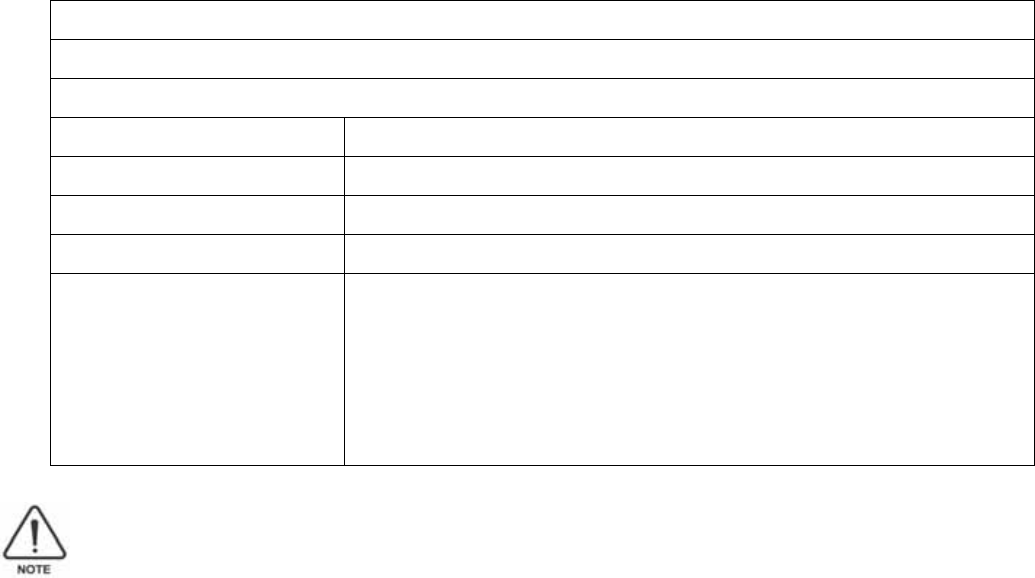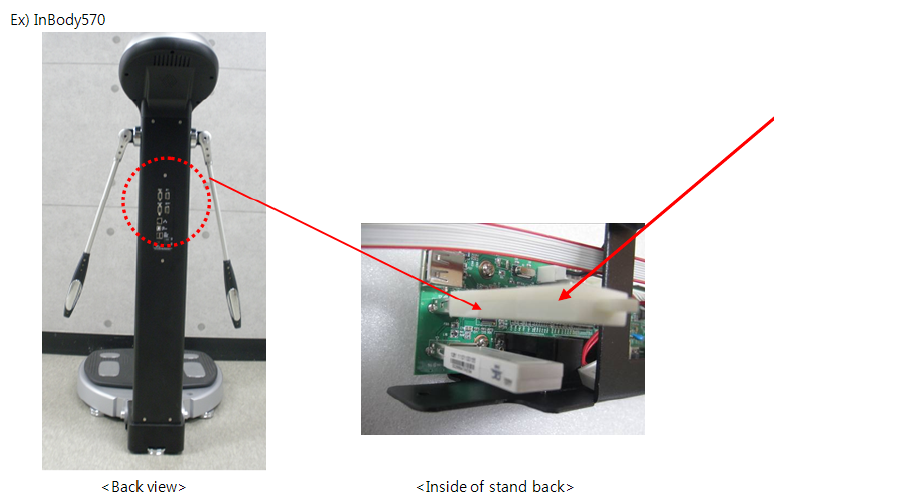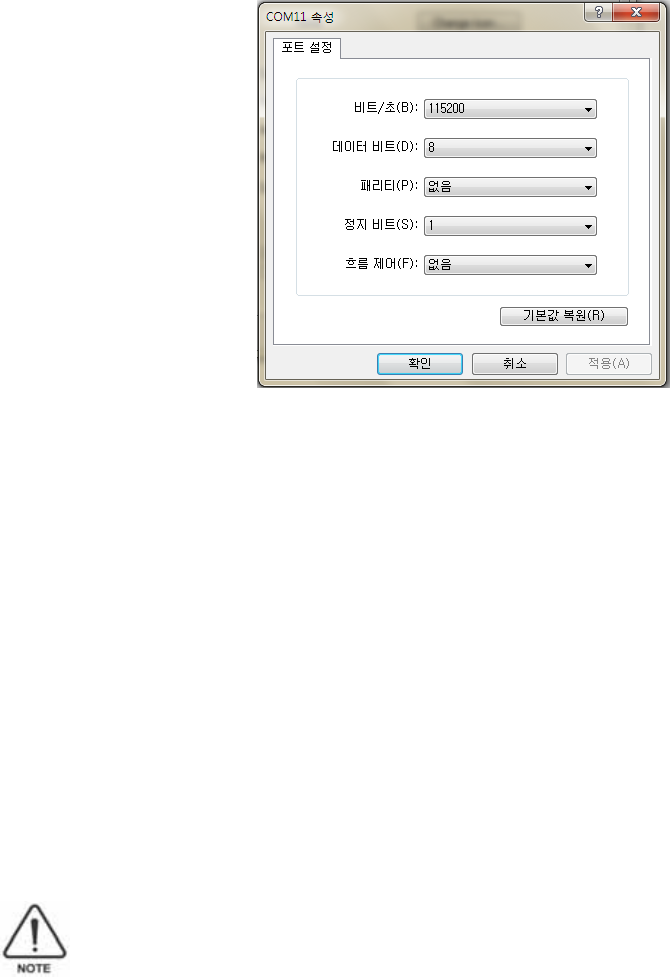User Manual
InBT-USB
Bluetooth Dongle with USB interface
Note;
* This user manual describes methods and functions for using InBT-USB.
* This product is a USB-type Bluetooth dongle which shall be assembled into the InBody
(Body composition analyzer) manufactured by Biospace for supporting data
communications via the USB port.

1. Overview
This product is a USB-type Bluetooth dongle which shall be assembled into the USB port of
the InBody (Body composition analyzer) for supporting data communications between the
InBody and a personal computer, or external device has Bluetooth function.
(1) Contents
① InBT-USB
② User’s Manual
2. Product Specifications
USB 2.0 Full Speed support
Bluetooth Version 2.1 + EDR, Class 1
Internal antenna
Frequency band 2.4GHz ISM band
Operation range 200-400m
Transmission strength +13 dBm
Reception sensitivity -86 dBm
Supported services Serial Port Protocol(SPP), Dial-up Networking Profile(DUN),
OBEX Objext Push, Profile(OPP), OBEX File Transfer Profile(FTP),
Human Interface Device Profile(HID), Phone Book Access
Profile(PBAP), Health Device Profile(HDP), Device
Identification Profile(DI), Service Discovery Protocol(SDP)
Bluetooth 2.1 supports AFH (Adaptive Frequency Hopping). AFH helps minimize interference
between WiFi and Bluetooth signals by automatically selecting communication channels that
are not used by WiFi signals. Please keep in mind that AFH may not guarantee complete
non-interference between WiFi and Bluetooth signals depending on the operating
environment. This includes the number of devices used and the distances between them.
Performance may vary by operating environment.

3. Usage of USB Type Bluetooth Dongle
※ The Bluetooth dongle, InBT-USB shall be assembled inside of the InBody (Body composition
analyzer) as following picture by the Biospace and measured data will be transferred to a
personal computer, or external device has Bluetooth function.
InBT-USB

1) Driver Support
Please install driver below in your OS imbedded board.
The drivers listed below can be downloaded for free from the FTDI website
(www.ftdichip.com). For more information on driver installation, visit the following site:
http://www.ftdichip.com/Documents/InstallGuides.htm.
(1) Virtual COM Port (VCP) Drivers
You can use ASCII commands on a terminal program to perform various controls and
configuration settings for InBT-USB.
Windows 98, 98SE, ME, 2000, Server 2003, XP and Server 2008
Windows 7 32,64-bit
Windows XP and XP 64-bit
Windows Vista and Vista 64-bit
Windows XP Embedded
Windows CE 4.2, 5.0 and 6.0
Mac OS 8/9, OS-X
Linux 2.4 and greater
(2) D2XX
Direct
Drivers (USB Drivers + DLL S/W Interface)
You should make your program for control of InBT-USB.
Windows 98, 98SE, ME, 2000, Server 2003, XP and Server 2008
Windows 7 32,64-bit
Windows XP and XP 64-bit
Windows Vista and Vista 64-bit
Windows XP Embedded
Windows CE 4.2, 5.0 and 6.0
Linux 2.4 and greater

2) Program Settings for OS imbedded board
After installing the InBT-USB driver on a VCP (virtual COM port), you can use ASCII
commands on a terminal program to perform various controls and configuration settings for
InBT-USB.
A terminal program is used for controlling or setting serial ports. The terminal program
described in this manual is HyperTerminal provided with MS Windows. For more information
on HyperTerminal, see the MS Windows Help.
Figure 1. HyperTerminal communication port settings screen
(1) The following default settings are used for communication between InBT-USB and
HyperTerminal.
• Baud rate: 115200bps
• Data bits: 8
• Parity bit: No parity
• Stop bits: 1
• HW Flow Control: Disable
(2) ASCII commands
Please control the InBT-USB using the ASCII commands below.
Provided below are instructions for using basic ASCII commands. For more
information on the examples and instructions for using other commands, contact
Biospace.

- AT command
This command is used for testing operation of the InBT-USB firmware. The command returns
OK to indicate normal operation.
- SET command
This command is used for retrieving or modifying the InBT-USB settings.
. Retrieving settings
AT
OK
SET
SET BT BDADDR 00:07:80:ff:ff:f1
SET BT NAME WT32-A
SET BT CLASS 001f00
SET BT IDENT BT:47 f000 4.0.0 Bluegiga iWRAP
SET BT LAP 9e8b33
SET BT PAGEMODE 4 2000 1
SET BT POWER 0 0 0
SET BT ROLE 0 f 7d00
SET BT SNIFF 0 20 1 8
SET BT MTU 667
SET CONTROL BAUD 115200,8n1
SET CONTROL CD 00 0
SET CONTROL ECHO 7
SET CONTROL ESCAPE 43 00 1
SET CONTROL GAIN 8 8
SET CONTROL MSC DTE 00 00 00 00 00 00
SET CONTROL READY 00
SET PROFILE SPP Bluetooth Serial Port
SET

. Modifying settings
In the following example, the Bluetooth PIN code required for pairing is set to ¡°0000.¡± The
code is saved in the non-volatile memory and only needs to be set once.
- INQUIRY command
This command is used for searching for other Bluetooth devices available for pairing within
the operating range.
- CALL command
The CALL command is used for establishing Bluetooth connections. The CALL event indicates
that a connection is being attempted the CONNECT event indicates that a connection has
been established.
- SET RESET command
This command is used for resetting the InBT-USB settings to factory defaults.
INQUIRY 5
INQUIRY_PARTIAL 00:21:86:35:c9:c8 02010c
INQUIRY_PARTIAL 00:07:80:93:d7:66 240408
INQUIRY_PARTIAL a8:7b:39:c3:ca:99 5a020c
INQUIRY 3
INQUIRY 00:21:86:35:c9:c8 02010c
INQUIRY 00:07:80:93:d7:66 240408
INQUIRY a8:7b:39:c3:ca:99 5a020c
CALL 00:07:80:93:d7:66 1101 RFCOMM
CALL 0
CONNECT 0 RFCOMM 1
SET RESET
WRAP THOR AI (4.0.0 build 317)
Copyright (c) 2003-2010 Bluegiga Technologies Inc.
READY.
SET BT AUTH * 0000

5. Troubleshooting
(1) If connection is not good, try pairing the devices again.
(2) Transferring data in large volumes may result in low performance depending on the
device connected.
(3) This product uses same frequency bands as normal WiFi signals and is subject to ambient
interferences.
FCC Information
This device complies with part 15 of the FCC Results. Operation is subject to the following two
conditions :
(1) This Device may not cause harmful interface, and
(2) This device must accept any interference received, including interference that may
cause undesired operation.
Note: This equipment has been tested and found to comply with the limits for CLASS B digital device,
pursuant to Part 15 of FCC Rules. These limits are designed to provide reasonable protection against
harmful interference when the equipment is operated in a commercial environment This equipment
generates, uses and can radiate radio frequency energy and, if not installed and used in accordance with
the instructions, may cause harmful interference to radio communications. However, there is no
guarantee that interference will not occur in a particular installation. If this equipment does cause
harmful interference to radio or television reception, which can be determined by turning the equipment
off and on, the user is encouraged to try correct the interference by one or more of the following
measures:
1.1. Reorient or relocate the receiving antenna.
1.2. Increase the separation between the equipment and receiver.
1.3. Connect the equipment into an outlet on a circuit different from that to which receiver is connected.
1.4. Consult the dealer or experienced radio/TV technician for help.
WARNING
Changes or modifications not expressly approved by the manufacturer could void the user’s
authority to operate the equipment.

¨Ï 1996-2012 Biospace Co., Ltd. All rights reserved.
Notice
This user’s manual cannot be copied, translated or transformed into different media without a prior
written consent from Biospace Co., Ltd, according to the copyright laws. This user’s manual and product
pertinent to this manual may have misprints or technical flaws, which can be modified without prior
notice to the readers. Biospace is not liable for any damage caused by a failure to meet the
requirements in this user’s manual.
Biospace Co., Ltd. [Head office]
518-10 Dogok 2- dong, Gangnam-gu, Seoul 135-854 KOREA
TEL : 82-2-501-3939 FAX : 82-2-501-3978
Homepage : http://www.e-inbody.com
E-mail : info @inbody.com
“CAUTION : This equipment complies with FCC radiation exposure limits set forth
for an uncontrolled environment. End users must follow the specific operating
instructions for satisfying RF exposure compliance. This transmitter must not be
co-located or operating in conjunction with any other antenna or transmitter. ”